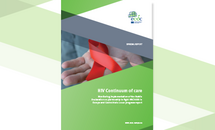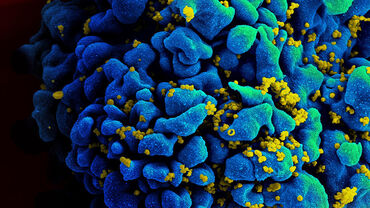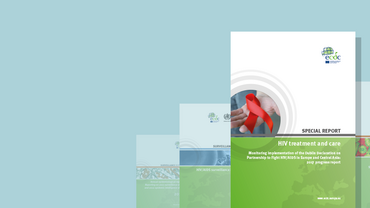Stigma: survey of people living with HIV - Monitoring implementation of the Dublin Declaration on partnership to fight HIV/AIDS in Europe and Central Asia: 2022 progress report
To improve the understanding of experienced HIV stigma in the community, ECDC — in collaboration with the European AIDS Treatment Group (EATG) and AIDS Action Europe (AAE) — initiated an exploratory survey in 2021 to measure HIV-related stigma across Europe and Central Asia.
Executive Summary
HIV-related stigma and discrimination remain major barriers to accessing HIV services for people living with HIV worldwide. In this context, stigma can be understood as the negative perception of people living with HIV based solely on their HIV status. Experienced stigma, or discrimination, occurs when people living with HIV experience negative or unfair treatment based on these perceptions. An estimated one in eight people living with HIV are denied health services because of stigma and discrimination, and research shows that over 50% of people report having discriminatory attitudes towards people living with HIV [1]. Understanding and addressing stigma is critical to achieving the zero discrimination element of UNAIDS vision and successive strategies to end the AIDS epidemic by 2030.
To improve the understanding of experienced HIV stigma in the community, ECDC — in collaboration with the European AIDS Treatment Group (EATG) and AIDS Action Europe (AAE) — initiated an exploratory survey in 2021 to measure HIV-related stigma across Europe and Central Asia. The objective of this survey was to examine the experience of HIV-related stigma in the region and to establish a benchmark measure of perceived and experienced HIV-related stigma among the most affected communities in order to assess progress toward the UNAIDS target of zero discrimination by 2030 [1].
A total of 3 272 people living with HIV from 54 of the 55 countries in Europe and Central Asia responded to the survey. Nearly one in three (30%) respondents had not told a single family member that they were living with HIV, and one in five had not told a single friend or a current sexual partner (19% and 22%, respectively). A large proportion of respondents (59%) either agreed or strongly agreed that it is difficult to tell others about living with HIV.
Rejection by friends was the most frequently experienced stigmatising practice, with 24% of respondents reporting ever having experienced this form of stigma, 6% of these in the last year. One in six (17%) respondents reported ever having experienced being threatened, verbally abused or physically harmed by a sexual partner, 4% of these in the last year.
One in four (26%) respondents indicated that they were worried about being treated differently by healthcare staff within the last year. Also within the last year, one in five (21%) respondents were afraid to go to healthcare services for fear of having their HIV status disclosed and one in seven (16%) avoided healthcare services altogether for fear of being treated differently. One in three (33%) respondents reported ever generally feeling that they were treated poorly in a healthcare setting (11% in the last year) and one in four (23%) reported ever being refused healthcare or experiencing a delay in treatment due to their HIV status (7% in the last year).
One in seven (15%) respondents reported that they were afraid to go to dental services within the last year for fear of having their HIV status disclosed. Nearly one in six (12%) respondents avoided dental services for fear of being treated differently, while 6% reported actually being treated differently by a dentist or dental healthcare staff.
One in seven (15%) respondents had ever felt scared to be in public (7% in the last year), which may be related to the proportion of respondents that had been subjected to such stigmatising practices as being verbally harassed (20%) or being threatened, verbally abused or physically harmed by someone other than friends or family (15%).
It is important to note that this exploratory survey recruited a convenience sample of people living with HIV from across Europe and Central Asia, with the vast majority of respondents identifying as gay, bisexual or other men who have sex with men. The survey also had a limited sample size. For these reasons, the findings in this report are not representative of the mix of exposure categories within the broader population of people living with HIV. Furthermore, the results do not allow for further assessment as to whether there are statistically significant differences in experiences between exposure categories (e.g. those diagnosed decades ago versus those diagnosed more recently) or if there are statistically significant differences between countries.
These data illustrate the need to ensure that education, awareness and other interventions around stigma meet the needs of all people living with HIV, including genders other than male or female, sexual orientations other than heterosexual and key populations such as ethnic minorities, prisoners, people who inject drugs and people who have sex in exchange for money or other goods.
Countries are strongly encouraged to collect more data around stigma and discrimination at the national level, including qualitative data, to explore how HIV-related stigma operates in different settings and across population groups, as well as to strengthen education programmes and raise awareness of HIV within all facets of their communities. While reducing transmission of HIV and eliminating new infections are critical components of ending the HIV/AIDS epidemic by 2030, this goal will not be entirely successful without also addressing the HIV-associated stigma and discrimination that are still very present across Europe and Central Asia.







